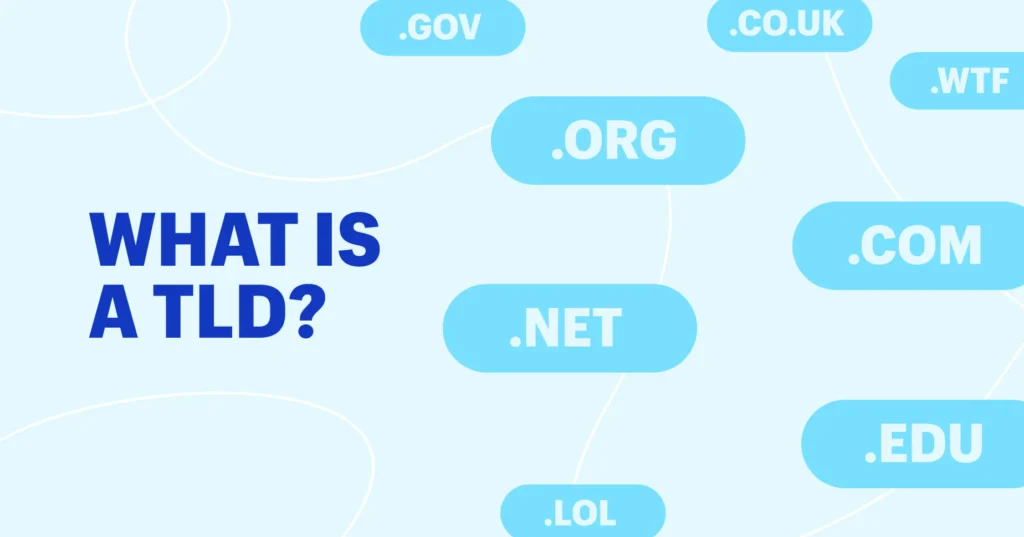What is a Domain and What is a Top-Level Domain (TLD)?
In the digital age, having an online presence is crucial for businesses, organizations, and even individuals. At the heart of this online presence is the domain name. But what exactly is a domain, and what is a top-level domain (TLD)? Let’s break it down.
What is a Domain?
A domain name is the address of your website that people type into the browser’s URL bar to visit your site. In simpler terms, if your website were a house, the domain name would be its address. For example, in the URL www.wpwebgreen.com, wpwebgreen.com is the domain name.
Domain names are unique and serve as a human-friendly way to access websites without needing to remember complex IP addresses (like 192.168.1.1). They are registered through domain registrars and must be renewed periodically.
What is a Top-Level Domain (TLD)?
A top-level domain (TLD) is the last segment of a domain name, located after the final dot. In wpwebgreen.com, .com is the TLD. TLDs are part of the Domain Name System (DNS), which is the hierarchical naming system used to organize and identify websites on the internet.
TLDs are managed by the Internet Assigned Numbers Authority (IANA), which is a branch of the Internet Corporation for Assigned Names and Numbers (ICANN). There are several types of TLDs, each serving different purposes:
- Generic Top-Level Domains (gTLDs): These are the most common TLDs, such as
.com,.org,.net, and newer ones like.blog,.shop, and.app. - Country Code Top-Level Domains (ccTLDs): These are specific to countries or territories, such as
.us(United States),.uk(United Kingdom), and.ca(Canada). - Sponsored Top-Level Domains (sTLDs): These are specialized TLDs sponsored by specific organizations or communities, such as
.edu(educational institutions) and.gov(government entities). - Infrastructure Top-Level Domains: The most well-known example is
.arpa, which is used for technical infrastructure purposes.
Here are 10 key factors that make up a good domain:
A TLD is essentially a label in the DNS hierarchy. It is the highest level of domain names and is used to categorize websites based on their purpose, location, or organization. TLDs are stored in the root zone of the DNS, and each TLD has its own set of rules and regulations for registration.
For example, .com is a gTLD that is open for registration by anyone, while .edu is an sTLD restricted to accredited educational institutions. Similarly, .uk is a ccTLD reserved for entities associated with the United Kingdom.
1 -Short and Simple: A shorter domain is easier to remember and type, which helps prevent errors and increases user engagement.
2 -Memorable: A domain that sticks in the mind is more likely to attract repeat visitors and word-of-mouth referrals.
3 -Easy to Spell and Pronounce: Avoid complex words or unconventional spellings. A domain that’s easy to say and spell will be easier for people to find.
4 -Relevant to Your Brand: A good domain should align with your business name, product, or industry, making it easy for people to connect it with what you do.
5 -Keyword-Rich: Incorporating important keywords related to your industry can help improve SEO and make your site easier to find through search engines.
6 -Unique and Distinct: A good domain should be distinctive and stand out from competitors.
7 -Uses a Trusted Extension: Well-known extensions like .com is more trusted and widely recognized. They’re also easier for people to remember and are considered more credible.
8 -Brandable: A unique domain that’s easy to brand can help your business stand out from the competition and create a strong online identity.
9 -Future-Proof: Choose a domain that can grow with your brand and won’t limit you if you expand your offerings in the future.
10 -Geographically Relevant (if applicable): If your business serves a specific region, adding a location-specific term (e.g., city or country) can make it more relevant to local customers.
The List of Top 20 Costly Domains Ever Sold
Domain names can be incredibly valuable, especially if they are short, memorable, and relevant to a popular industry. Here’s a list of the top 20 most expensive domain names ever sold:
- Voice.com – $30 million (2019)
- 360.com – $17 million (2015)
- Sex.com – $13 million (2010)
- Fund.com – $9.99 million (2008)
- Porn.com – $9.5 million (2007)
- Fb.com – $8.5 million (2010)
- We.com – $8 million (2015)
- Diamond.com – $7.5 million (2006)
- Beer.com – $7 million (2004)
- Z.com – $6.8 million (2014)
- iCloud.com – $6 million (2011)
- Insure.com – $5.1 million (2009)
- Hotel.com – $5 million (2004)
- Casino.com – $5.5 million (2003)
- Toys.com – $5.1 million (2009)
- Clothes.com – $4.9 million (2008)
- Slots.com – $5.5 million (2010)
- Business.com – $7.5 million (1999)
- Mi.com – $3.6 million (2014)
- Medicare.com – $4.8 million (2014)
Conclusion
Understanding domains and top-level domains is essential for anyone looking to establish an online presence. A domain name is more than just an address; it’s a brand, an identity, and a valuable asset in the digital world. Whether you’re registering a new domain or investing in a premium one, knowing the basics of domains and TLDs can help you make informed decisions.
And as the list of costly domains shows, the right domain name can be worth millions. So, choose wisely, and who knows? Your domain might just be the next big sale! >buy Top Level domains<



